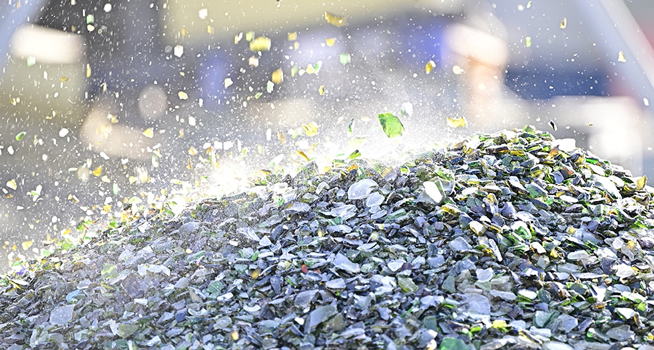Today, external cullet is the main raw material used by glassmakers. Its incorporation rate in bottle and jar production has risen considerably in recent years, reaching up to 95 percent in some of Verallia Group’s furnaces. At present, however, its availability limits its integration. To improve this availability, collection, sorting and processing of glass waste needs to be optimized.
To this end, Verallia is committed to awareness-raising programs. For example, the Group is a member of the European action platform “Close the Glass Loop,” a collaborative public-private partnership created by the European Glass Packaging Federation (FEVE), which aims to increase the glass collection rate to 90 percent by 2030.
At the same time, Verallia is investing in the development of recycling in places where infrastructures are still inadequate, such as South America. Among these initiatives, the Group has launched a program to install collection bins in Brazil (900 bins by the end of 2023), where the collection rate was 25 percent in 2021.
Investing to ensure cullet availability
The growing demand from the Group’s customers for ever more eco-friendly packaging is an excellent lever for developing glass circularity and meeting their own sustainability challenges.
In this context, it is important for Verallia to establish closer links between industry players and regions, in order to standardize collection processes and thus, in the long term, increase the quantity and quality of cullet.
Verallia currently operates 19 cullet processing centres in 8 countries, including 16 in Western Europe and 3 each in Chile, Argentina and Russia. Thanks to these facilities, Verallia is able to process almost 50 percent of the cullet it needs to feed its furnaces.
Investing in cullet integration: a strategy to reduce the group’s carbon footprint
In the face of the climate emergency, Verallia is committed to decarbonizing its activities and aims to reduce its emissions by 46 percent by 2030 compared with 2019.
Cullet also plays a major role in this decarbonation process. Replacing raw materials with recycled glass offers numerous advantages. Adding 10 points of cullet to the production process reduces a glass furnace’s CO2 emissions by 5 percent and its energy consumption by 2.5 percent. What’s more, recycling one tonne of cullet saves an average of 1.2 tonnes of virgin raw materials.




